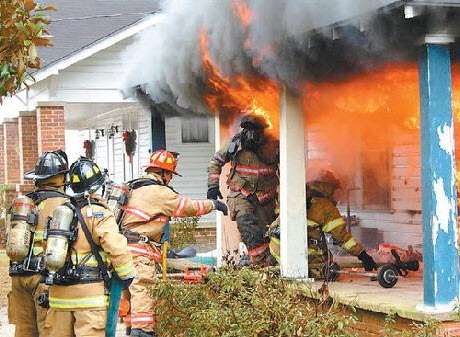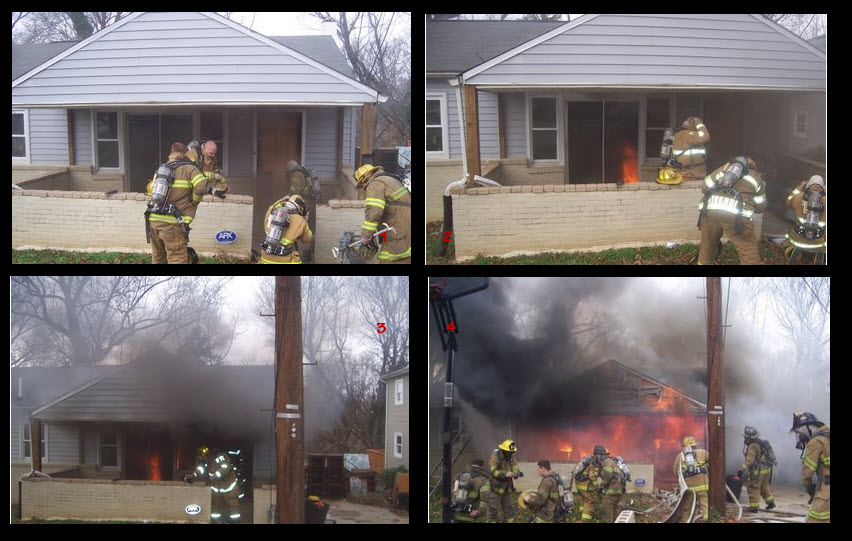First-Due Arriving Companies; Are You Prepared?
By Christopher J. Naum, SFPE on Dec 05, 2010 with Comments 0
It seems we’ve struck some interests over past week since we first discussed the First-Due Fire Officer on the most recent edition of Taking it to the StreetsTM where we had a vibrant and insightful program in which we discussion some of the expansive facets related to the First-Due Fire Officer.
The First-Due Fire Office program can be downloaded HERE at Firefighter Netcast.com
The formulative discussion revolved around a variety of functional elements, traits, responsibilities and duties befalling the First-Due Officer, and was followed up with a post here on Thecompanyoffer.com. We discussed how today’s First-Due Officer must perform smarter with increased perceptions, discernments and acumens with intelligence and wisdom that is drawn from further progressing and collective fire ground response and operational experiences.
My good friend Captain Willie Wines (aka The Iron Fireman) posted a great follow-up article associated with the radio program on his blog associated with further interpretations of the First-Due Officer. Check out “The First-Due Officer; What are you thinking?” HERE.
To further our dialog on the first-due, I’ve added a few series of video clips and images with related links to promote and stimulate your view of the first-due fireground scene as it relates to the variables and personnel perceptions; the need for diligence and cognitive situational awareness and risk assessment and being truly “prepared” both mentally and physically. By way of physically, I mean- is your gear and PPE, functional, operational and adequately in-place?
As you can see there are numerous instances where the difference in the incident outcome correlated to the level of PPE protection that was in-place and implemented at the time of adverse conditions or unexpected or unforeseen circumstances.
Here’s today’s situations to think about at the station, around the kitchen table, over a cup of coffee in the day room after your next alarm or tonight at the station for a “back step” company drill.
- What are the Adverse Conditions that might be encounted upon arrival as the First-Due?
- Flashover, Backdraft, Compromised or degraded Structural Conditions, Collapsed Conditions, Structural Collapse, Wind Drive Fire Behavior, Extreme Fire Behavior, Pre-Flashover/ Post-Flashover….
- How Effective are you in Reading the Smoke?
- How About Reading the Building? Do you understand Occupancy Profiling and Occupancy Risk?
- Are you Taking the Time to Read the Subtle or Pronounced Fireground Indicators.; Comprehend their meaning or are you just “too engaged in the tactic or task?”
- Do you have an appreciation for Tactical Patience?
- Are your operations Tactically Driven by SOP’s and SOGs?
- What Rules of Engagment are you considering?
- Have and IAP in mind?
There have been a lot of articles and postings on adverse conditions as companies are opening up or pushing into the structure on the initial entry. Take a look at the next two series of video clips related to flashover conditions and the impact of that fire behavior on the companies and personnel. In each instance companies were extremely fortunate that the injuries sustained were not more severe than encountered.
- What encounters have you or your company experienced?
- In retrospect how effective was the initial risk assessment and occupancy profile-was the size-up appropriate or were key indicators missed or neglected?
- Did the fast pace of the initial arrival and subsequent deployment filter or obscure mission critical indicators that should have been identified and acted upon?
- Did the tactical assignment and task overshadow tactical patience?
- Did someone or everyone miss reading the smoke, fire or occupancy risk?
- Did other tactical assignments contribute toward the unexpected or adverse conditions encountered, such as ventilation induced flashover? ( More on that topic for a later post; See Taking it the Streets November 4, 2010 show

- Firefighter Will Gregory exits the home with his PPE on fire. Photo by Brian Haney, The Daily Record.
There are a series of photos from a previous posting at STATter911 HERE that depicts firefighers working to push-in on a fire in a small residential occupancy. The ensuing flashover ignites the PPE of one firefighter. Look at the series of photographs and take note of the fire and smoke conditions, the size and profile of the occupancy ( remember it’s Occupancy RISK not Occupancy Type).
- Think about the sequencing of your initial operations.
- Think about the mission critical 360;
- how does that play into your initial incident actions plan (IAP)?
Companies were dispatched for an assignment for a house fire. Both E807 and TK807 responded with crews of 4 personnel each. E813 arrived on the scene and reported light smoke showing on side Alpha. Upon arrival on the scene, the crew from TK807 (four staff) made entry to the house. The following series of events led to conditions in the house that presented a flashover environment. The hose line from E813 burst, a backup line was not charged due to no established water supply, and the house was not yet ventilated. Without the protection of a hose line, the crew was committed to the house when the room flashed. One firefighter was apparently far enough in the house to avoid any injury, A second FF received 2nd degree burns to his right shoulder, and a third FF received the full force of the flashover suffering second-third degree burns to his face, hands, and the majority of his torso. (Original incident information posted at the time of the event)
- Photo 1: Firefighters don PPE and SCBA with light smoke visible in this first of four pictures shot by Tony George of PGFD Station 813
- Photo 2: Six seconds later a small amount of fire and darker smoke can be seen at the sliding glass door.
- Photo3: Forty-eight seconds after the initial picture, more fire and darker smoke are apparent.
- Photo 4: Exactly two-minutes after the first picture was shot, flashover occurs with firefighters inside.
For a complete narrative and futher incident details of this previous STATter911 postings related to this event go HERE, and HERE
Take a good look at the performance of PPE when utilized and implemented correctly….
Don’t ever underestimate the dynamics and uncertainty of the evolving fireground during your operations. The video clip here depicts how quickly operations can change from an investigation to a major mass casualty incident.
For a comprehensive look at this event go here are two links for you to visit, HERE at Commandsafety.com and the NIOSH Report HERE
In addition, take a look at some information relate to another tragic incident response to a reported gas leak that occurred in December, 1983 that lead to five fire fighter LODD’s in Buffalo, New York. HERE
Here’s a series of Reports worth your time to read related to the First-Due:
Filed Under: Combat Fire Engagement • Featured
























